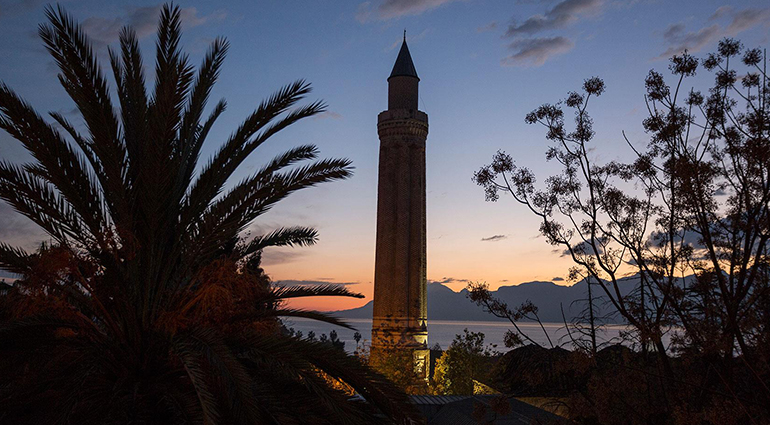The most interesting structure to be constructed in the early Islamic era in Antalya is the YivliMinare, which is within the Yivli Minaret complex. This structure which is an independent and massive construction is on the north side of the mosque which has taken the same name. Due to there is no connection with structure which is used as mosque and it has clear constructional differences and due to its far more monumental design it is evident this structure and the adjacent mosque were designed together, nor at the same time. Its monumental size together with the materials employed and its fragmentary remains of its glazed tile-work embellishments has a unique place in within 13th c. Seljuk architecture. TheYivli Minaret, together with theSaatKulesi and Hadrianus Gate serve to identify Antalya at the same time and it is one of the city's most prominent and visible symbols. The base of the minaret consists of dressed stone blocks, with a length per side of more than 5 meters and which is 6.5 m. in height. Above the base, all the parts were built employing brick and a lime mortar. Repeating the same form on the base of the corner knitting crochet-work is provided to gain a top view of an octagonal minaret beveled at about half the height of the base. The Eastern side of this section has a shallow niche, while on the southern side is a porthole window to provide lighting into the interior staircase. The body of the minaret body has the same octagonal form as the section above the square in section base. Each side is connected by rounded corners, with pointed arches above and rectangular areas for inscriptions at the base within a brick frame.One of theseremains protected in one of the east side site. The most impressive part of the minaret its cylindrical body.The cylindrical form with the applied glazed tiles seems to suggest movement to the eye. The balcony-şerefe is reached by means of 90 marble slabsteps. On the mosque balcony a cylindrical body and lead covered roof which is not recorded in the visual source dating from the beginning of the 20thcentury, but was added to this minaret during its restoration in 1953 and after. The minaret retains indications of its original rich covering of tile-work.
